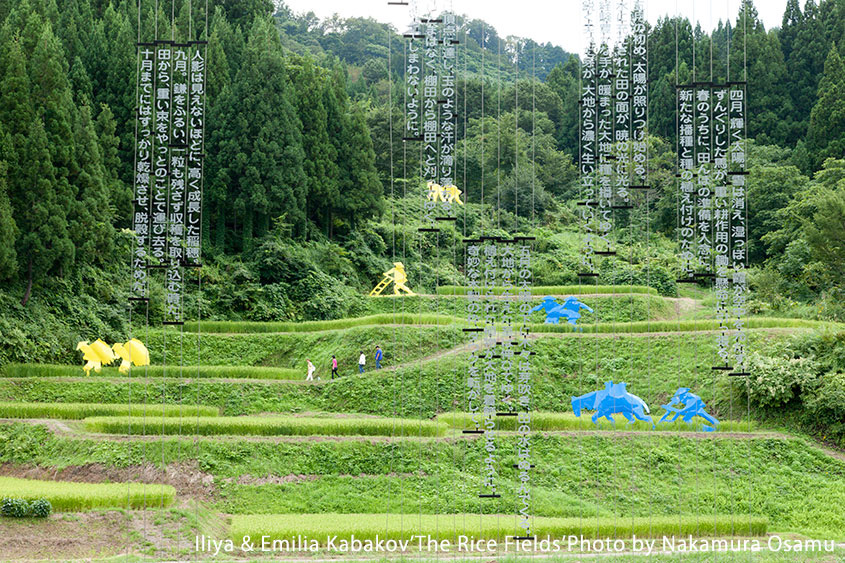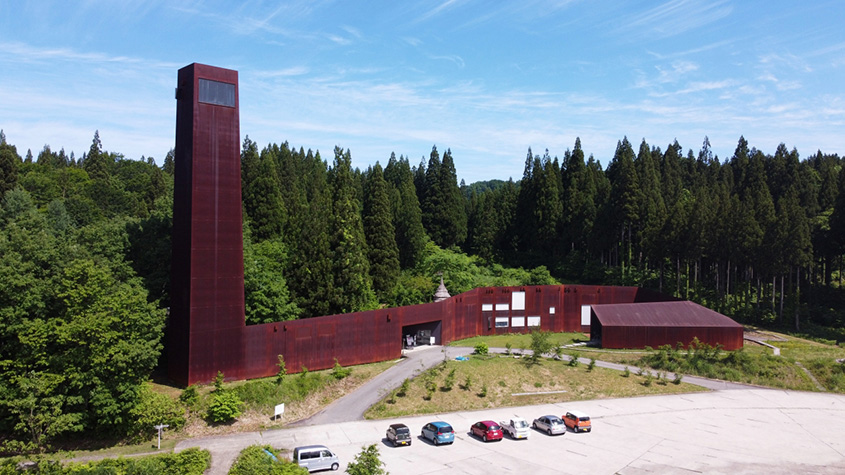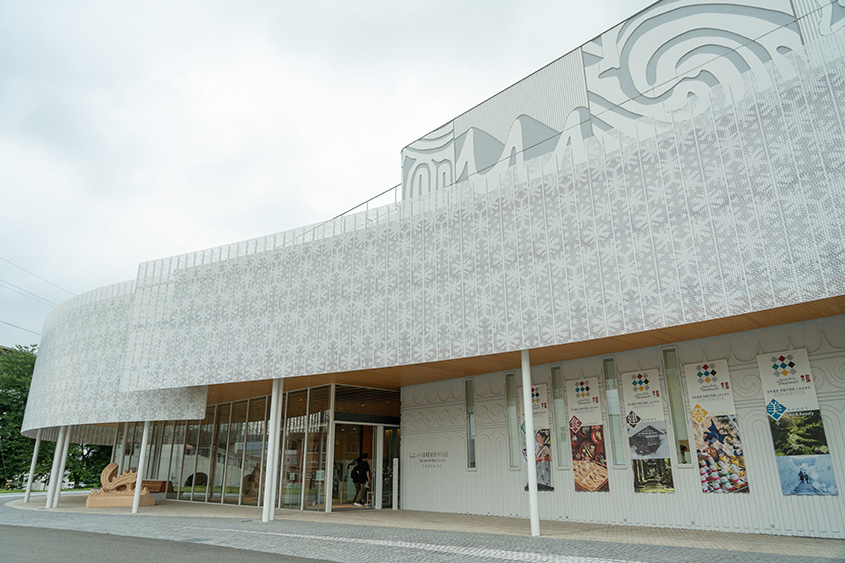A Journey to Experience Japan's Unique Culture and Nature
Tour guides (Tokyo & Niigata)
Words by Mari Hashimoto

From Hokkaido to Okinawa, Japan is blessed with plenty of national parks and other places to enjoy the bounties of nature. As part of Japan Cultural Expo 2.0’s activities, this article introduces facilities and events where people can encounter and learn about the nature that nurtured Japan’s distinctive culture.
National Museum of Nature and Science (Tokyo)

Founded in 1877, the National Museum of Nature and Science is the only national museum in Japan offering a comprehensive exhibition of natural history and science. Located in Ueno Park in Tokyo’s Taito ward, the museum’s Global Gallery explores the history of life on Earth, while its Japan Gallery looks at nature and life on the Japanese archipelago. As well as permanent exhibitions of the museum’s collection of over 25,000 specimens and materials, these galleries periodically stage special exhibitions and thematic exhibitions too. The museum also comprises the Tsukuba Research Departments (closed to the public), the Center for Collections (closed to the public), and the Tsukuba Botanical Garden (open to the public), all located in Tsukuba City, Ibaraki Prefecture, and the Institute of Nature Study, located in Shirokanedai in Tokyo’s Minato ward and designated a Natural Monument and Historical Landmark. The museum is centered in Ueno Park, home to several museums and galleries. As such, it is also close to Tokyo National Museum, The National Museum of Western Art, and Ueno Zoological Gardens, for example, so visitors can expand and deepen their knowledge while traversing between the worlds of art and science, between specimens and real living creatures.



National Museum of Nature and Science (Tokyo)
- Address
- 7-20 Ueno Park, Taito-ku, Tokyo 110-8718
- Hours
-
9:00 AM to 5:00 PM (Last entry allowed until 30 minutes before closing time.)
*Opening hours are subject to change. Please check the museum's website for updates.
Closed every Monday (If Monday is a national holiday, the museum will be open on that Monday and closed the following Tuesday.)
Closed for Year-End/New Year Holiday (December 28 to January 1)
*Closing days are subject to change. Please check the museum's website for updates. - Admission
-
General and university students: 630 yen
*Admission is free for high-school students and younger or persons aged 65 or over.
*Special exhibitions may vary, so please check the museum's website for details.
Echigo-Tsumari Art Field (Niigata)



Since 2000, this art project has been held once every three years in Tsunan, Tokamachi City, Niigata Prefecture. Before a municipal merger in 2005, the event was hosted by the local governments of one city, four towns and one village. The region is not located near any Shinkansen station or motorway junction, nor has it benefitted from the presence of factories and the subsequent residential development, with the area still retaining the characteristics of Japan's original rural landscape. This pioneering Japanese art project uses this location to its advantage by promoting the satoyama landscape and the traditional way of life and culture while using art as a fulcrum for regional revitalization. This steady, ongoing pursuit of initiatives rooted in the local community has led to an increase in visitor numbers. In addition to the triennial festival, a special edition is also being staged in 2023, featuring more than 200 artworks and installations that can be enjoyed throughout the year, as listed below.
・Museum on Echigo Tsumari, MonET
・Matsudai NOHBUTAI
・The Last Class
・House of Light
・Echigo-Matsunoyama Museum of Natural Science “Kyororo”
・Hachi & Seizo Tashima Museum of Picture Book Art (closed in winter)
・Kiyotsukyo Gorge Tunnel
・Echigo-Tsumari Kamigo Clove Theatre (closed in winter)






Echigo-Tsumari Art Field (Niigata)
- Address
- Echigo-Tsumari region (Tsunan, Tokamachi City, Niigata Prefecture)
- Tel
- 025-761-7767 (Echigo-Tsumari Art Field Information Center)
- URL
- https://www.echigo-tsumari.jp/en/
- Opening hours
- Saturday April 29–Sunday November 5, 2023 (closed on Tuesdays and Wednesdays)
* Some installations are only open on Saturdays, Sundays and national holidays
* Some facilities are open on Tuesdays and Wednesdays - Admission
- General admission: 2,500 yen
Elementary and junior high school students: 1,000 yen
Free for children under elementary school age
Echigo-Matsunoyama Museum of Natural Science “Kyororo”

The name “Kyororo” derives from the song of the ruddy kingfisher, a bird commonly found in the area’s satoyama. The museum aims to conserve the satoyama environment and develop the local region through exhibits and educational activities that highlight the unique environmental biodiversity of this region, with its satoyama landscapes and some of the heaviest snowfall on Earth. The striking building covered in red rust was designed by architects Takaharu and Yui Tezuka. It is constructed from plates of weathering steel that weigh approximately 2,000 tons. Behind the museum lies the Forest of Kyororo, an 80-hectare field museum containing beech forests, ponds, and marshes. This wildlife sanctuary has been designated an “Important Satochi-Satoyama Area for Maintaining Biodiversity” by the Ministry of the Environment Government of Japan. Nature observation events and conservation projects are often held here together with visiting guests and supporter’s associations. A museum admission ticket and a notification of entry form are required to enter the Forest of Kyororo.


Echigo-Matsunoyama Museum of Natural Science “Kyororo”
- Address
- 1712-2 Matsunoyama Matsuguchi, Tokamachi City, Niigata Prefecture
- Tel
- 025-595-8311
- URL
- https://www.matsunoyama.com/kyororo/english
- Opening hours
- 9:00–17:00 (last entry at 16:30)
*9:00–16:00 (last entry at 15:30 from December 1, 2023 to March 15, 2024) - Closed
- Tuesdays (if Tuesday is a national holiday, the museum stays open and is closed the following day), December 26, 2023–January 1, 2024, and March 11–15.
*Tuesdays and Wednesday from December 1, 2023 to March 15, 2024. - Admission
- General admission (high school students and older): 500 yen
Admission is free for junior-high-school students and younger.
People with an Echigo-Tsumari Art Field 2023 Admission Passport can enter up to two times.
Tokamachi City Museum TOPPAKU (Niigata)

Traces of the nomadic folk who lived during the Incipient Jomon period (ca. 13,500 BC) have been found in Niigata Prefecture’s Tokamachi City, home to the Echigo-Tsumari Art Triennale. People began living in settled communities during the Initial Jomon period (ca. 9,300-5,200 BC), with the population then booming during the Middle Jomon period (ca. 3,400-2,400 BC). During this time, people began to produce distinctive earthenware known as “flame-style pottery.” One of the three permanent exhibitions at Tokamachi City Museum, which reopened in 2020 following renovation work, focuses on the “Jomon Period” and displays 57 examples of deep-bowl shaped earthenware including flame-style pottery. These items were excavated from the Sasayama Site and are collectively designated a National Treasure. The museum also stages an exhibition about the traditions and history of the “Snow Country,” the name given to Niigata when it is enveloped in thick snow for nearly half a year, from December to April. The third permanent exhibition is entitled “Textile History” and explores textiles, a major industry in the area, from the Yayoi period (ca. 4th century BC–mid-3rd century AD) to the present day.




Tokamachi City Museum TOPPAKU (Niigata)
- Address
- 1-448-9 Nishi-honcho, Tokamachi City, Niigata Prefecture
- Tel
- 025-757-5531
- URL
- https://www.tokamachi-museum.jp/en/
- Opening hours
- 9:00–17:00 (last entry at 16:30)
- Closed
-
-Mondays (if Monday is a national holiday, the museum stays open and is closed the following day)
-December 28–January 3
-December 2023 to February 2024 on Tuesdays - Admission
- General admission (high school students and older): 500 yen
Separate fees apply for entry to thematic exhibitions.

